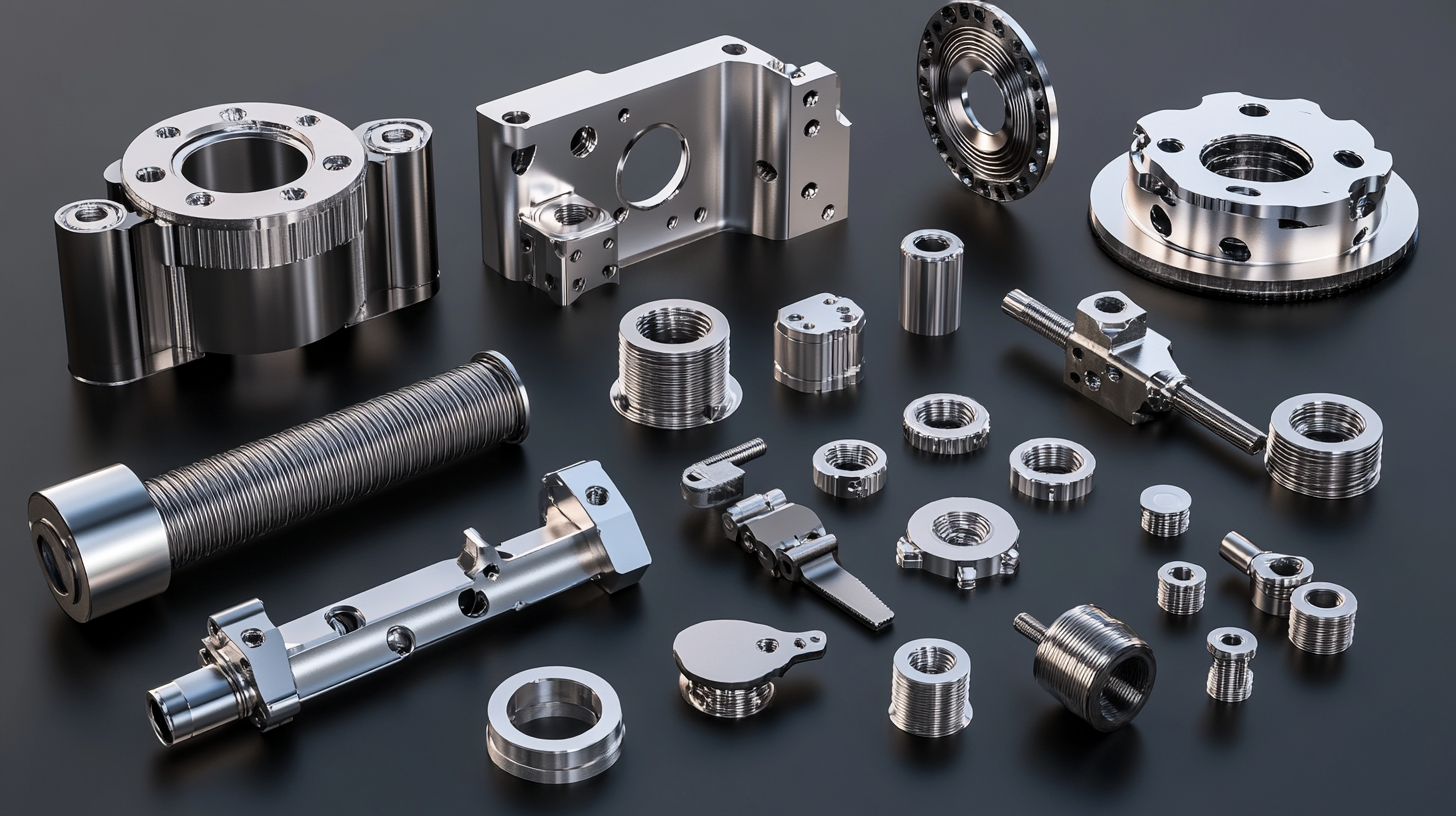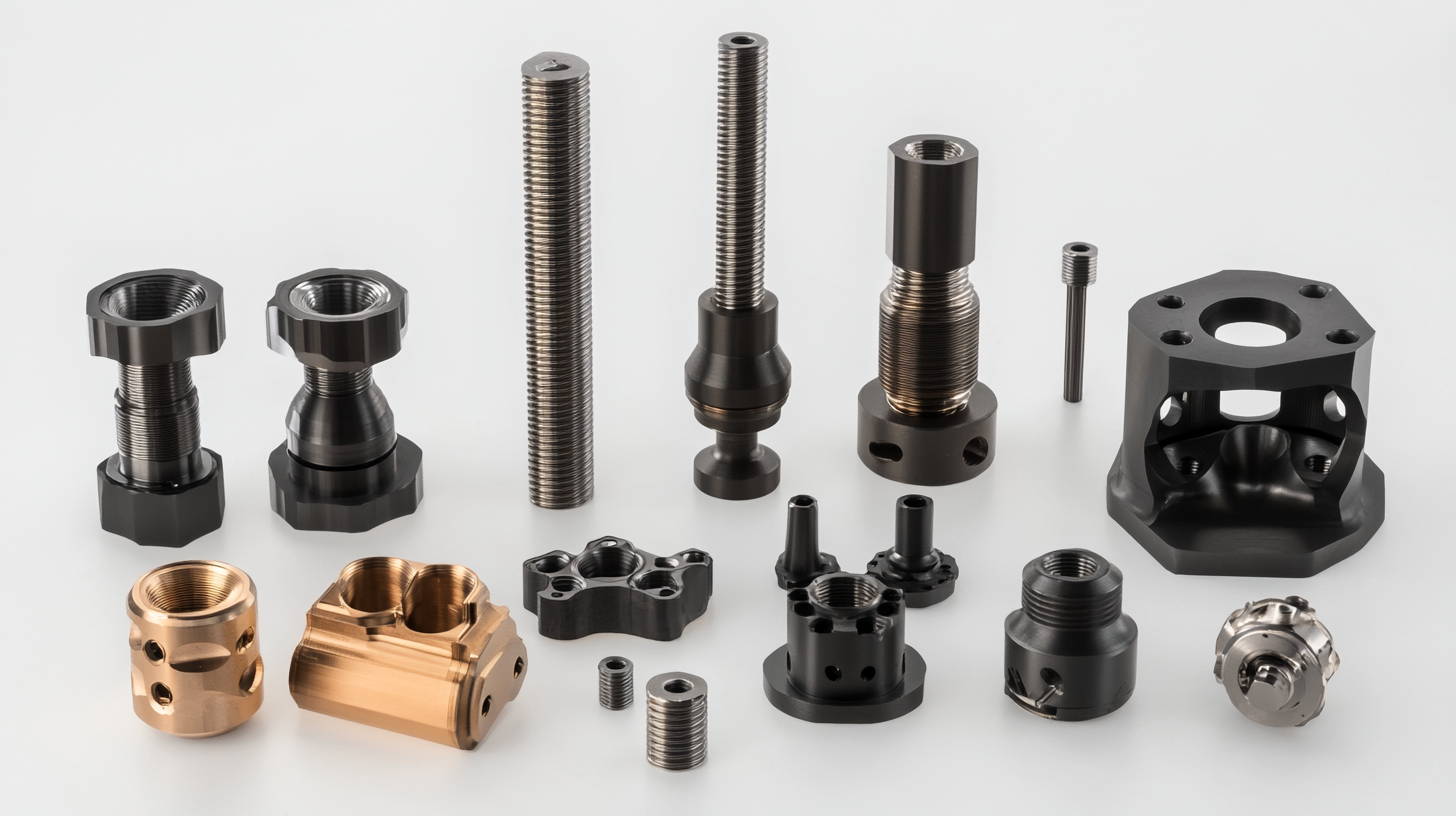 +86 180 0293 5268
+86 180 0293 5268






In the rapidly evolving landscape of global manufacturing, the demand for precision and quality in Cnc machined parts has reached unprecedented levels. According to a recent report by Deloitte, the global CNC machining market is projected to grow at a CAGR of 6.5% from 2021 to 2028, driven by advancements in technology and an increasing emphasis on efficiency in production processes. As industries such as aerospace, automotive, and electronics continue to expand, the need for high-quality machined components that meet stringent specifications becomes critical. Global buyers must navigate this complex market, ensuring they partner with suppliers who can deliver not only precision but also consistency and reliability.
Additionally, a study by MarketsandMarkets highlights that the adoption of automated CNC machining solutions is on the rise, enabling manufacturers to enhance their capabilities in producing Cnc machined parts. As businesses strive to stay competitive, understanding the nuances of sourcing these components is essential. This blog will delve into vital insights and strategies for global buyers, empowering them to make informed decisions in sourcing Cnc machined parts. By leveraging data and analytics, buyers can optimize their procurement processes, mitigate risks, and forge stronger partnerships with suppliers across the globe.

When sourcing CNC machined parts globally, several key factors come into play that can significantly influence the success of your procurement strategy. First and foremost, understanding the capabilities of potential suppliers is crucial. Different manufacturers have varied levels of expertise, technology, and machinery. It’s essential to evaluate their ability to meet your specifications in terms of precision, material selection, and production volume. Conducting thorough audits and requesting samples can provide insights into their manufacturing processes and quality control measures. Another critical factor is the cost structure involved in global sourcing. While it may be tempting to choose the lowest-priced option, it’s important to consider total cost of ownership, including freight, tariffs, and potential delays in delivery. Establishing solid relationships with suppliers can lead to better pricing and more favorable terms over time. Additionally, having a clear understanding of the market dynamics in different countries can help you negotiate more effectively and anticipate any hidden costs that could arise during the sourcing process. Finally, staying informed about geopolitical and economic trends is vital. Global sourcing can be influenced by factors such as trade agreements, labor costs, and supply chain stability. Keeping abreast of these developments will enable you to make informed decisions and adapt your sourcing strategy accordingly. By being proactive in these areas, global buyers can ensure a smoother sourcing experience while securing high-quality CNC machined parts that meet their requirements.

When sourcing CNC machined parts, understanding material selection is crucial for global buyers. The emergence of carbon-fiber reinforced composite materials has significantly influenced the industry. These materials are renowned for their exceptional strength-to-weight ratios, making them ideal for various applications in aerospace, automotive, and sports equipment. According to recent analyses, carbon-fiber composites have demonstrated performance enhancements that traditional materials struggle to match, particularly in 3D printing processes.
Moreover, advancements in CNC machining technologies have expanded options for custom component manufacturing. For instance, Norck has recently expanded its services to include precision CNC machining, indicating a market trend favoring customized solutions. The ability to produce complex geometries with high precision not only improves efficiency but also allows for the optimization of product performance. Reports suggest that companies focusing on low volume manufacturing are increasingly adopting CNC machining due to its flexibility and cost-effectiveness.
Additionally, the exploration of novel materials like the LM25 aluminum alloy reinforced with vanadium carbide (LM25Al/VC) showcases significant advancements in machinability and durability. Recent studies utilizing analytical modeling and neural networks indicate that this composite material optimizes machining economics while providing enhanced performance characteristics. As material technology evolves, global buyers should remain informed about these innovations to make strategic decisions that align with their sourcing needs.

Navigating the realm of CNC machining requires a solid understanding of quality standards and certifications to ensure that the parts sourced meet both performance requirements and industry regulations. When looking for suppliers of CNC machined parts, buyers should prioritize partners that adhere to recognized quality management systems, such as ISO 9001 or AS9100. These certifications reflect a company's commitment to maintaining high standards throughout their manufacturing processes, which is crucial in industries where precision and reliability are paramount, such as aerospace and medical.
Moreover, understanding specific material certifications can greatly influence the overall quality of the machined parts. Materials used in CNC machining often come with standards like ASTM or AMS, ensuring that the sourced materials meet the necessary mechanical and chemical properties before processing begins. Buyers should also be aware of any additional requirements specific to their industry or project, such as RoHS compliance for electronics or FDA approvals for medical applications.
To further ensure quality, it's essential to establish strong communication with suppliers. Engaging in discussions about their quality control measures, inspection processes, and any certifications held can provide insight into their manufacturing capabilities. This transparency not only fosters trust but also allows buyers to make informed decisions when selecting their CNC machining partners, ultimately leading to successful sourcing experiences and high-quality end products.

Effective communication is the cornerstone of successful sourcing in the CNC machining industry. For global buyers, building strong relationships with suppliers transcends mere transactional interactions; it requires a deep understanding of cultural nuances and effective dialogue. One strategy to enhance communication is to establish a clear framework of expectations right from the onset. Detailed specifications, timelines, and quality standards should be communicated explicitly to avoid misunderstandings that can lead to delays or defective parts.
Moreover, leveraging technology can significantly enhance communication with suppliers. Utilizing collaboration tools and platforms allows for real-time updates, shared documents, and instant messaging, which facilitate quicker responses to queries and changes in project requirements. This digital approach not only fosters transparency but also nurtures a proactive communication culture. Encouraging suppliers to voice their insights can lead to innovative solutions and improvements, as they often possess valuable expertise and experience in CNC machining processes.
Language barriers can be a significant hurdle in global communication. To mitigate this, buyers can invest in language training or use translation tools to ensure all parties fully understand technical jargon and project descriptions. Additionally, adopting a patient and respectful communication style goes a long way in building rapport with suppliers from diverse backgrounds. By prioritizing effective communication strategies, global buyers can optimize their sourcing processes and cultivate long-lasting partnerships with CNC machining suppliers.
When sourcing CNC machined parts, global buyers face a dual challenge: achieving high quality while adhering to budget constraints. Cost analysis is a critical component of this process, as it directly impacts production timelines and overall project success. According to a recent report from Grand View Research, the global CNC machining market was valued at approximately $63.62 billion in 2022 and is projected to grow at a CAGR of 6.1% from 2023 to 2030. This growth emphasizes the importance of effective sourcing strategies that balance these two priorities.
A meticulous cost analysis should consider factors such as material type, complexity of the design, and production volume. For instance, prices for common machining materials like aluminum and steel can fluctuate significantly, affecting overall costs. The 2021 Manufacturing Cost Benchmarking report by Fictiv indicates that material costs can account for up to 60% of total manufacturing expenses. Therefore, aligning material selection with budget objectives is paramount.
Moreover, quality control measures play a pivotal role in cost management. While cheaper machining services may tempt buyers, they often lead to increased scrap rates and longer lead times due to rework, ultimately inflating project costs. According to a study by Deloitte, companies that prioritize quality in their supply chain achieve up to 20% lower overall costs. Thus, investing in reliable suppliers with robust quality assurance practices can yield greater long-term savings and ensure adherence to project budgets.
